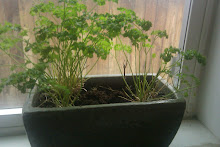
As you can see from the pictures, we (I actually take full responsibility) crammed a lot of veggies into our garden space last year. This year (actually every year) I vow to be better about it. I have promised my family each growing season that they will be able to walk down the corn and tomato rows with ease...but every year I overdo it and we have to squeeze between the rows on our hands and knees and harvest the best we can....it is very jungle-like.....

Each January I draw a preliminary sketch of the garden layout and then when I am done purchasing all my seed (if ever....ha ha ha) I finalize the layout according to companion planting and crop rotation. I haven't been exactly precise with it...but I try my best. This gets a little tricky when you have a relatively small garden and lots of crops. And this is especially difficult if you want to grow several types of the same veggie as some will cross pollinate. I have not had problems with this in the past but I typically only save a small percentage of seed for the next season anyway.
To understand crop rotation you first need to understand vegetable plant families....from all my gardening books, classes, magazines and Internet research over the years, I have learned that there are basically 9 main vegetable family groups. They are: Nightshade, Mustard, Legume, Squash, Onion, Parsley, Spinach, Lettuce, Mint, and then there's a misc group. Some veggies from the Nightshade family are tomatoes, potatoes, bell peppers, and eggplant. Some from the Mustard family are broccoli, boc choy, cabbage, cauliflower, radish, and turnip. The legume family includes beans and peas as well as clover and alfalfa. Cucumber, melons, and gourds come from the squash family. Garlic, leeks and chives come from the onion family and carrot, celery, dill and cilantro from the parsley family. The spinach family includes swiss chard and beets and the lettuce family includes...um...lettuce and believe it or not...sunflowers. Lastly, the mint family includes thyme, oregano, basil, sage, rosemary, lavender and marjoram. The misc category is pretty much everything else.
The idea behind crop rotation is to relocate plant families from one season to the next and thus minimize pests and disease common to each family. Also, rotation helps minimize micronutrient deficiencies in the soil as some plants are heavy feeders and deplete the soil of nutrients. Of course, if you amend the soil with compost every season you probably don't need to worry about it as much. I add compost to the garden every year so it's not a problem for me. My main concern in crop rotation is pest management which really goes hand in hand with companion planting. Companion planting is based on the idea that certain plants benefit from being planted next to one another. The benefits can include pest control, nutrient intake or pollination. For instance, in my garden I grow marigolds between my tomatoes as they deter the bad nematodes. (In other words... yes they smell bad!)....Mint deters flies, cabbage moth, ants and rodents. Be careful with mint however as it will spread like crazy. (I usually plant my mint in containers to keep it from spreading.) There are many resources available on both crop rotation and companion planting..... these are just a few of which we have had success with so far.








I understood about the need for crop rotation, but not the particulars. What an interesting post! Your garden may be a jungle, but it sure looks cool in the pictures :D
ReplyDeleteLooks like you have abundant crops in your fabulous vegie garden!
ReplyDeleteThanks Kyna!
ReplyDeleteBernie: thanks for stopping by the blog....we added approx 20 x 90 ft of garden space this year so hopefully we produce lots more this season.
Your garden jungle is beautiful! We can never walk down our rows either...especially the tomato row. And then I had the silly idea of growing beans up each tomato plant, that made maneuvering through the rows interesting to say the least.:)
ReplyDeleteCrop rotation in a small garden is a bit challenging, we struggle with that. I'm curious, do you have a big problem with aphids on your brassicas like we do each summer?
Your garden is beautiful! Looks like a huge harvest in store! My father rotates..has two side-by-side spaces. He plants one and buries garbage in the other to compost for a year. Then he rotates. He has the most fantastic produce EVER!
ReplyDeleteKimberly..welcome to The Beer Garden!...Thanks...that is a marvelous idea...I bet that works quite well....hmmmm...now I just need more garden space.... lol
ReplyDeleteWow that is QUITE the garden...makes mine look so TINY lol Good work!!
ReplyDeleteThanks KF!
ReplyDeleteSunny - enjoy your posts so much. I am NOT a green thumb, but my Grandfather (Montana) and my Mom (Post Falls) were and I enjoyed the fruits of their labor. I LOVE to can food, just not grow it.
ReplyDeleteAlso love to cook. If you grow beets, and don't use the greens, please let me know. We could have a great get together with the best Borsht you ever had!
ME
Thanks Me....I enjoy digging in the dirt and Bent enjoys cooking like you....we make a great team that way :) I certainly will save you some beet greens and I have never tried Borsht but I'm always game :)
ReplyDelete